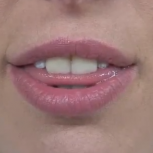From this week, for a while, I’ll be re-posting some of the posts I’ve written in the last few months – mainly because more people are reading now (!) but also because over the next few weeks I’m going to be extremely busy and may not have the time to come up with brand new posts that are good enough to include here.
However, all this is still useful! Reading it once and practising it for a while is great – reading it and practising it again (and again) is even better…
Also, later this year I’ll be putting a lot of these together and recording many more examples, to make into a book. Watch this space!
However, for today we return to September last year when I posted about the bane of many learners’ lives: TH sounds.
– Chris
* * * * * *
This is as good a place as any to begin, because ”-th-” represents a pair of sounds that almost everybody (even native speakers) has trouble with. The two sounds, in phonetic notation, are /θ/ and /ð/.
They’re articulated in exactly the same way – tongue pushed up against top teeth, with the tip of the tongue under and even slightly beyond the teeth. If you were to lick the cutting edge of your top two teeth, that would put your tongue in about the right place.
Keeping your tongue in that position, you must then blow air between your tongue and teeth. The most important thing here is to keep your tongue pushed up quite hard, so as to create the fricative ”hiss”, but not to let it touch your top lip. If you do that you’ll just be making a raspberry sound, and you’ll know it’s wrong.
If you get it right, you’ll be making a /θ/ sound. Just doing this can be taxing for many people, it can feel awkward to have part of your tongue ”out of your mouth” (it’s not, really, but it feels like it is) and it can feel fake and wrong to pronounce English words with this sound.
But keep at it! Watch how a good speaker does it, and listen to how delicate the sound actually is – it may feel like a thick and clumsy sound, but when it’s done properly it’s just another fricative, somewhere between /s/ and /f/. (In fact those are the two most common sounds someone will make when they get /θ/ wrong)
I recommend practising making long, drawn out /θθθθθθθ/ sounds, a few seconds long, to get used to the feeling. Then use those long fricatives to start and end a few words:
thank /θæŋk/ – theft /θəft/ – thin /θɪn/ – thought /θɔ:t/ – thumb /θʌm/
path /pɑ:θ/ – Beth /beθ/ – myth /mɪθ/ – north /nɔ:θ/ – south /saʊθ/
Once you’re comfortable with /θ/, you can try adding your voice to the sound, so that you’re saying a long /θθθθθθθ/ at the same time as voicing a long Schwa sound /əəəəəəə/, to make a long /ððððððð/. A lot of people find voiced /ð/ harder than voiceless /θ/, and to be honest, /ð/ doesn’t appear in very many languages worldwide.
Once again, practice making a single, long sound for a while – then when that’s a little easier, try some words – remembering to use an exaggerated, long /ððððððð/ in each:
that /ðæt/ – then /ðen/ – this /ðɪs/ – though /ðəʊ/ – thus /ðʌs/
father /’fɑ:ðə/ – whether /’weðə/ – with /wɪð/ – bother /’bɒðə/ – other /’ʌðə/
As you can see from the above examples, there are quite a few small but extremely important English words and particles that use these two sounds, /θ/ and /ð/. It’s fair to say that these two sounds are two of the most frequently-occurring consonants in English – despite only being in a couple of hundred words, those words are among the most often used.
Here are some examples of strange but quite possible utterances which illustrate the point:
-
They thundered through Lambeth and Southwark on the path to Leatherhead.
-
Ruth and Arthur threw fourth and fifth, that’s a further depth than those other athletes.
-
Truth through maths, though – it’s another theme for thinkers, thanks!
-
Without strength, it’s not worth threatening them; the thought is worth nothing.
-
A thousand moths and their mouths, thirsty for the threads of clothes.
-
Be there with this, that and those three other things; then there’s no threat of death.
Something that complicates matters is when another consonant joins on to a /θ/ or a /ð/ – it creates a consonant cluster, and you’ll notice a few in the above examples. I’ll be talking about consonant clusters in more detail later.


I use the tongue twister (self-made): ‘Thirty-three thespian thieves threw thirteen thunderbolts’ for the /θ/ sound 🙂
LikeLiked by 1 person